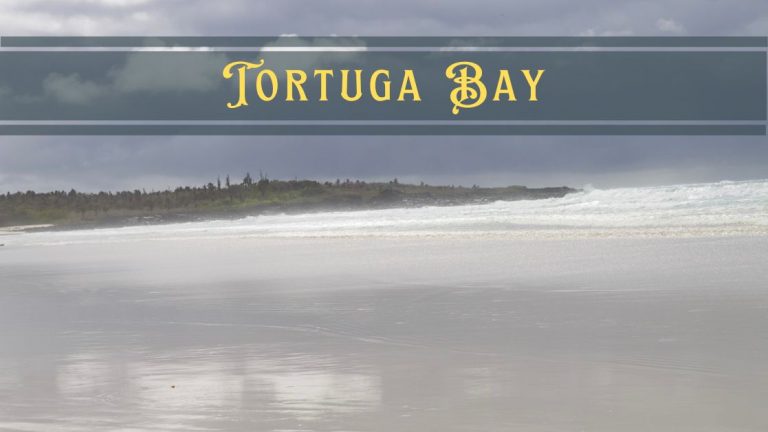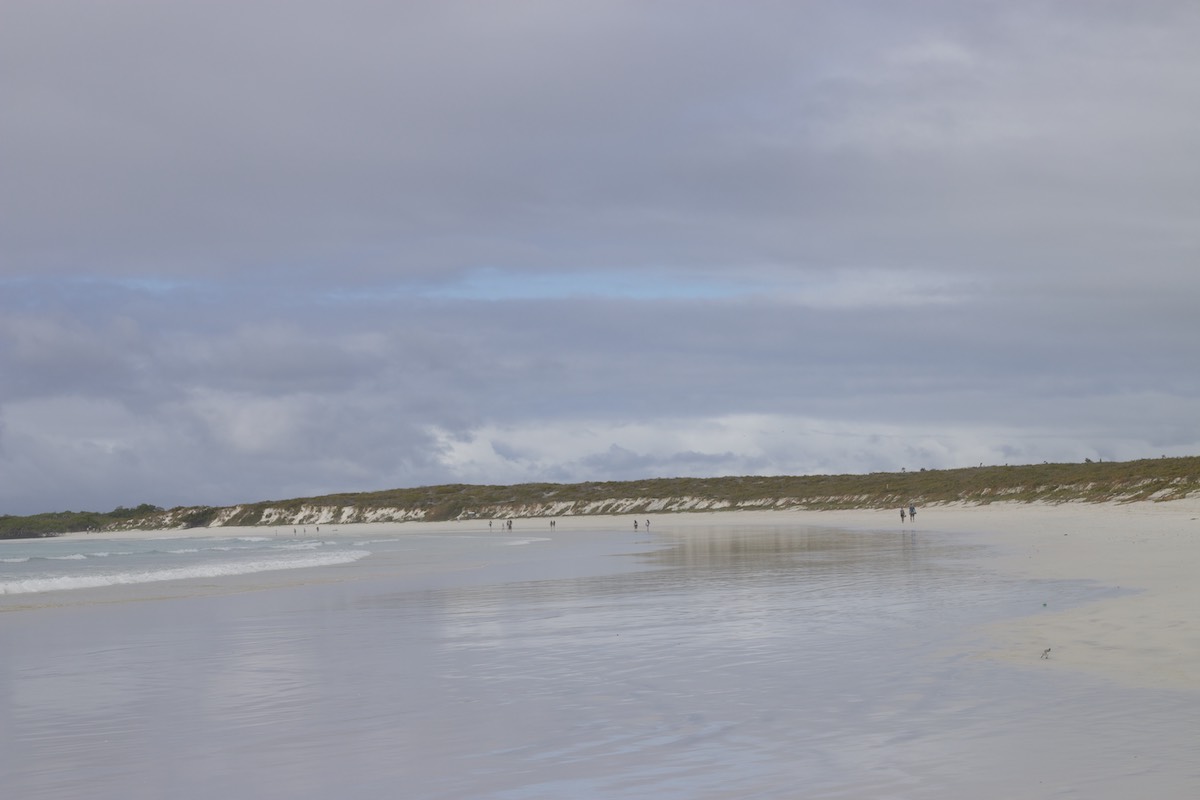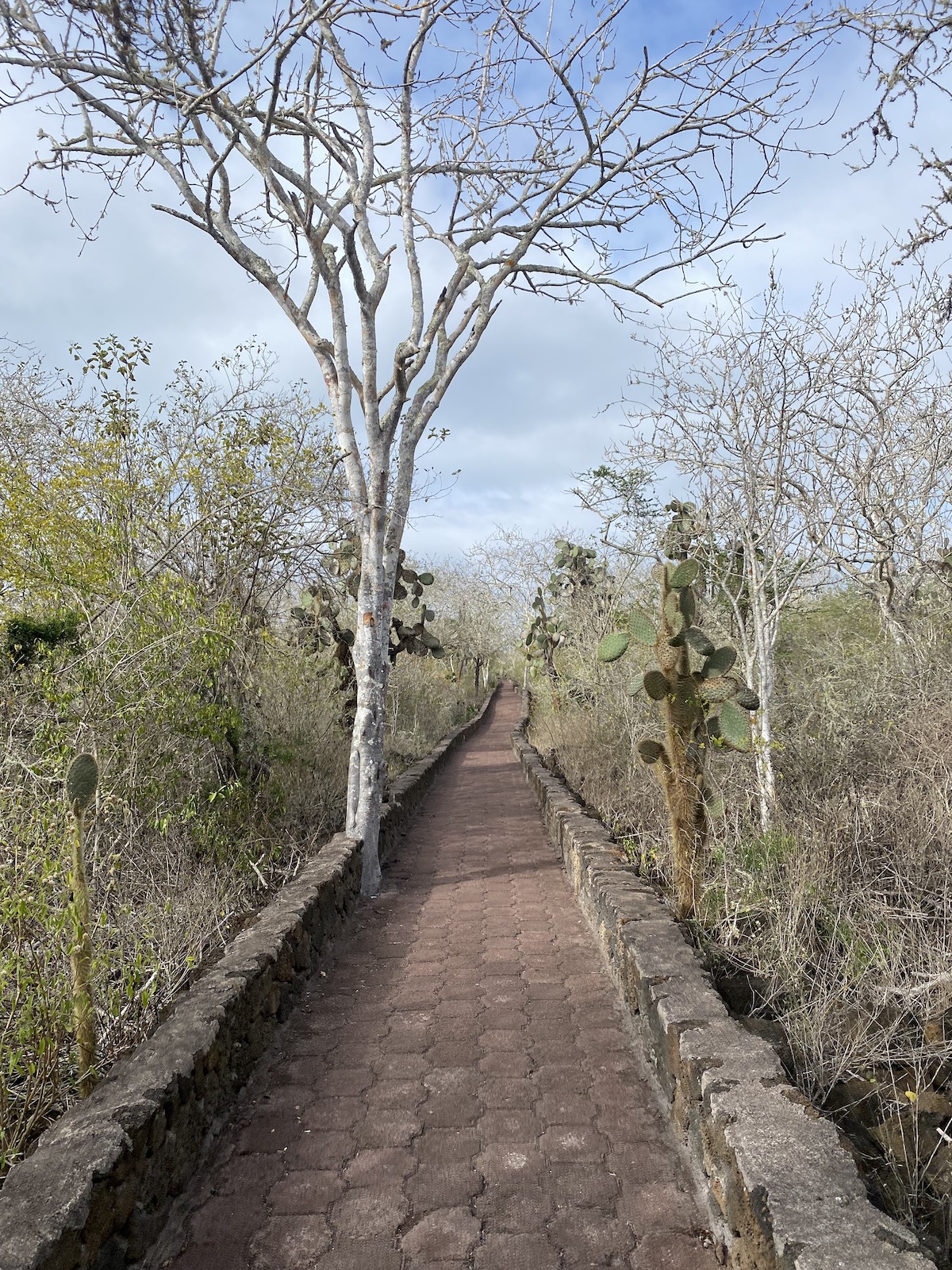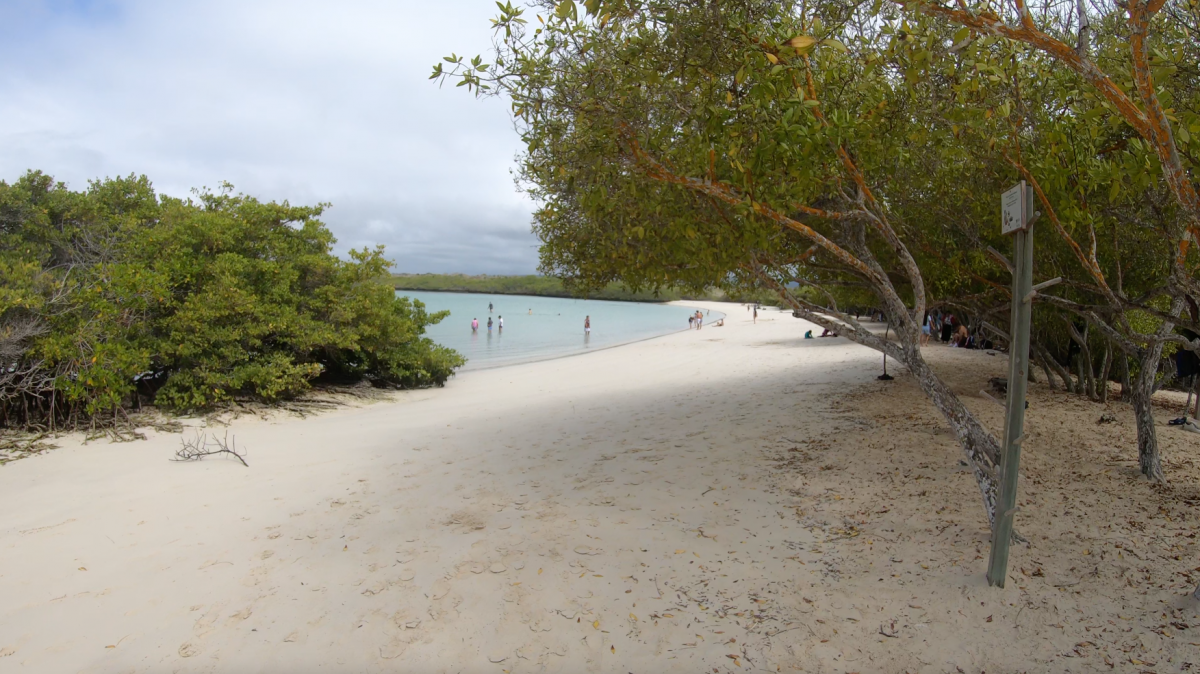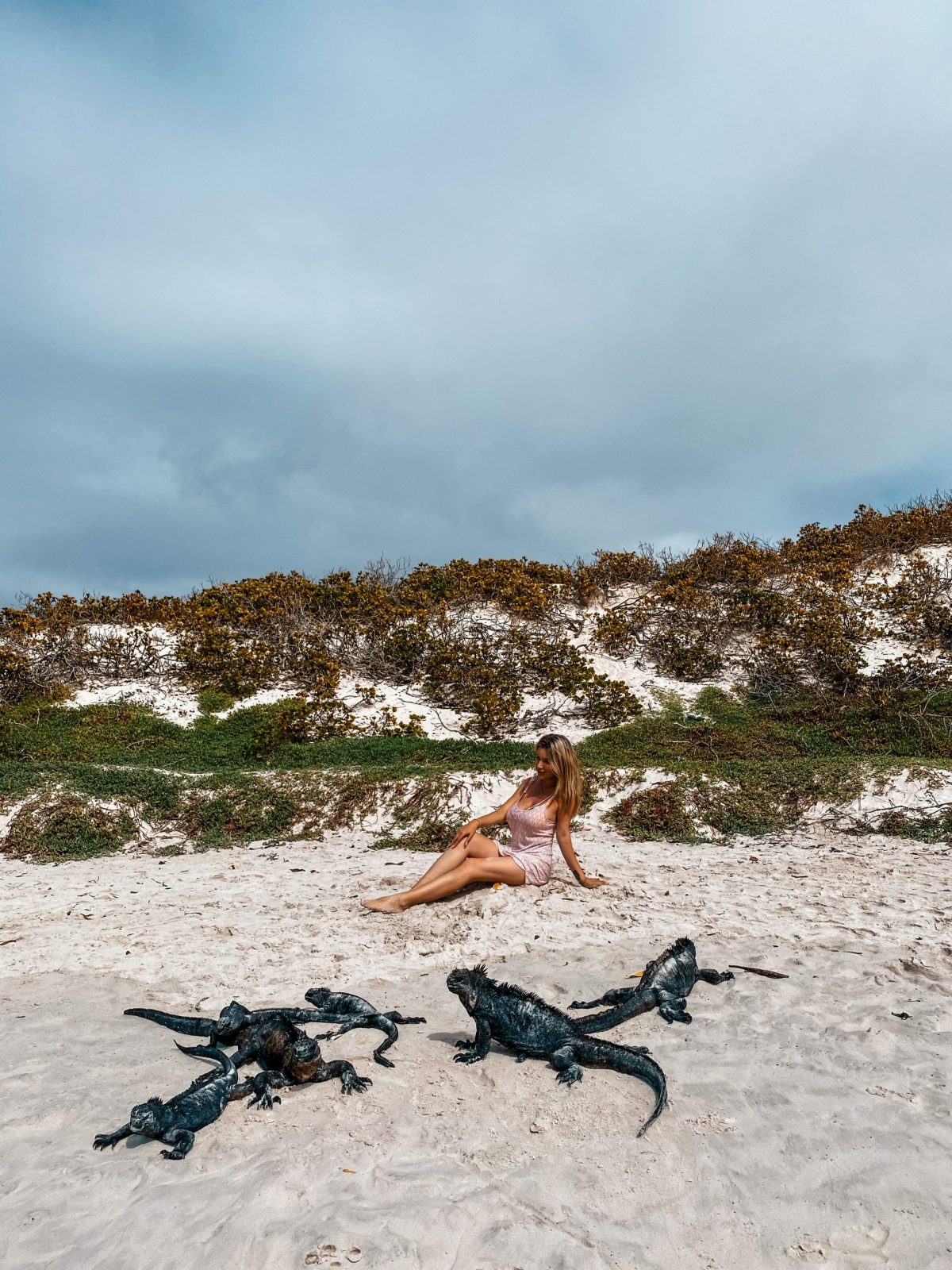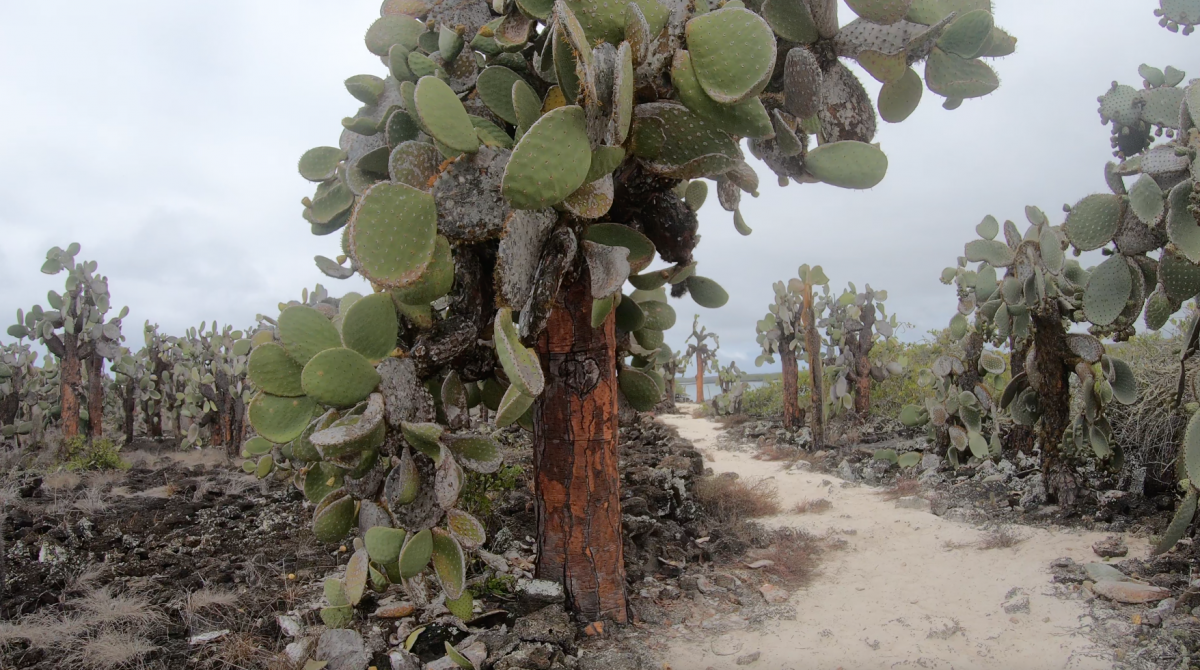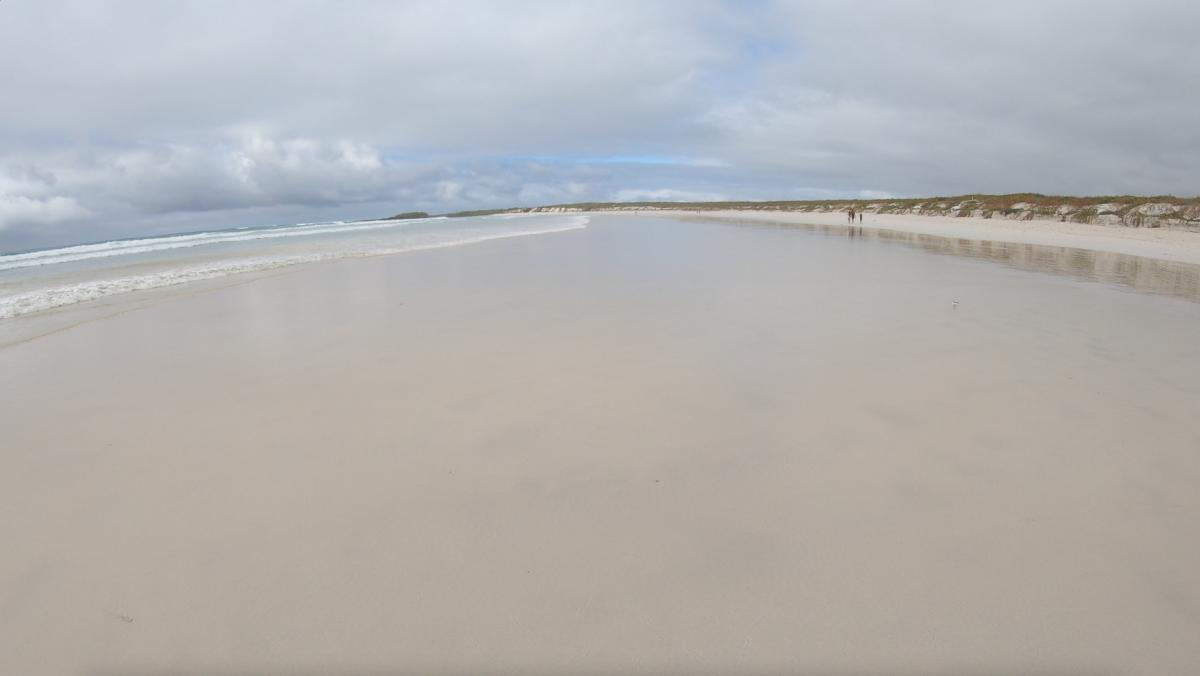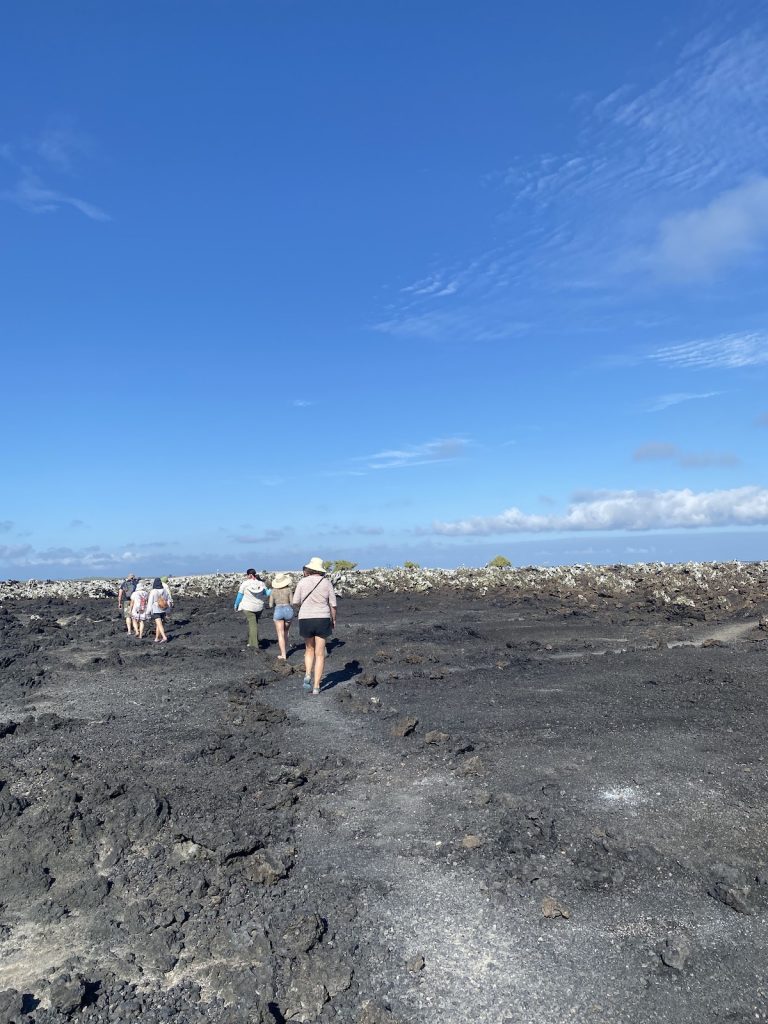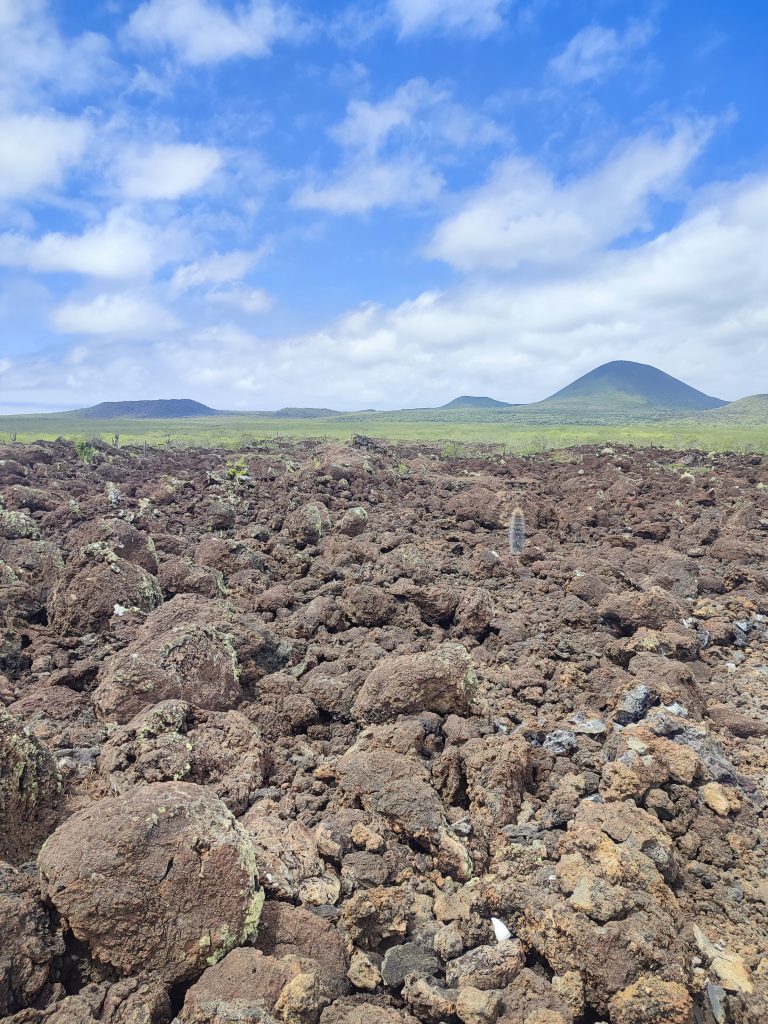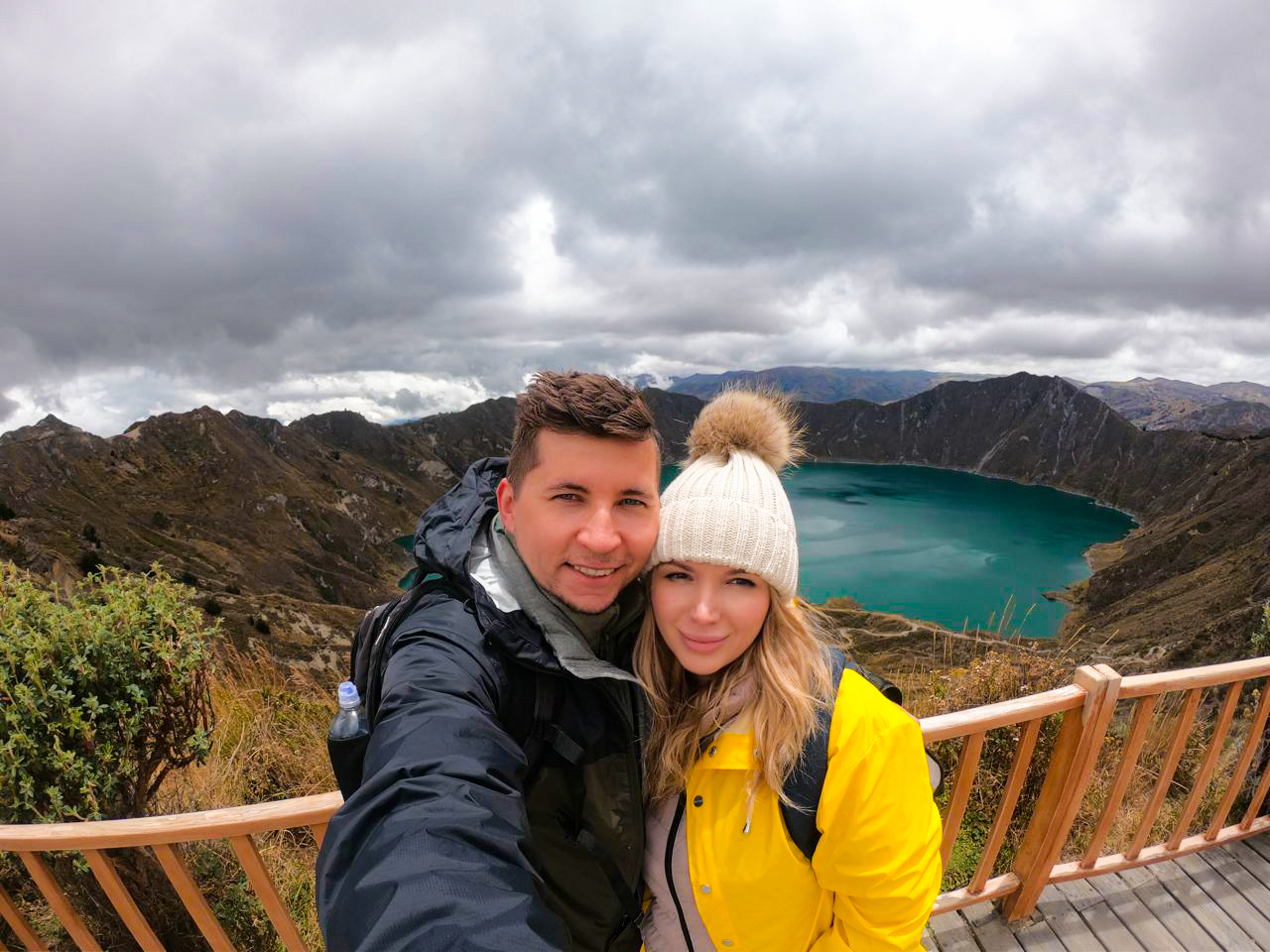Tortuga Bay, or Bahia Tortuga as it’s locally called, is one of those spots that immediately captures your heart. We found this stunning stretch of white sand beach on Santa Cruz Island, right in the heart of the Galapagos archipelago. The crystal-clear, blue waters surrounding the bay made it feel like a tropical paradise.
In the past, fishermen would head to Tortuga Bay in search of fresh catches. Today, however, the focus has shifted towards ecotourism, which has become an essential part of the local economy. The bay is named after the Galapagos tortoises that come to this long stretch of beach to nest. As we wandered along the shore, we were lucky to spot not just these iconic tortoises but also playful sea lions, striking pink flamingos, and plenty of marine iguanas basking in the sun. It truly felt like stepping into a wildlife documentary! We’ve visited Tortuga Bay beach pretty much on the first day while on the Galapagos:
Looking back, planning our Galapagos adventure took a lot of research – from choosing the right islands to visit, to figuring out where to stay and what day trips to take. Skip the guesswork and get a FREE personalized Galapagos trip quote from my trusted local experts. Your booking helps support both this blog and local Galapagos tour operators who are committed to sustainable tourism.
How to Get to Tortuga Bay
Tortuga Bay is located along the southern coast of Santa Cruz Island, just a short distance from Puerto Ayora. We took a quick $1 cab ride from our hotel straight to the entry point, making the start of our visit easy and convenient.
From there, the Tortuga Bay trailhead is easy to find—it’s right at the end of Charles Binford Avenue, a few blocks behind the main port area by Las Ninfas and the Fiesta Hotel. Following the paved path from the trailhead, it’s about a mile and a half to the beach, which took us about 30 to 45 minutes at a relaxed pace.
The walk itself is lovely, with a flat, smooth path that winds through ancient lava fields scattered with Palo Santo trees and towering Opuntia cactus. This unique landscape adds a lot to the anticipation of reaching the stunning white sands of Tortuga Bay!
From the Puerto Ayora docks, you may also take a boat to Tortuga Bay beach. The trip takes around 20 minutes. For details on daily departure times, inquire at the dock.
Playa Brava and Playa Mansa
Tortuga Bay is made up of two distinct beaches: Playa Brava and Playa Mansa. Each has its own unique charm. We found it to be a peaceful escape from the usual crowds and noise. Playa Brava, with its stronger waves, contrasts beautifully with the tranquil waters of Playa Mansa, where we enjoyed a relaxed, calm atmosphere.
When we arrived at Tortuga Bay, Playa Brava was the first stretch of stunning white sand we encountered. The waves were powerful, perfect for surfers, but definitely not safe for swimming. We decided to continue on to Playa Mansa, which felt like a much better spot for us to relax and swim safely.
To reach Playa Mansa, we took the trail to the right, winding through mangroves for about 20 minutes. Alternatively, you can simply walk along the beach. Once we reached Playa Mansa, we were greeted by a calm tidal lagoon—ideal for swimming and sunbathing. The serene waters here are perfect for snorkeling, where we spotted tiny reef sharks and a few marine iguanas lounging nearby.
The main Mansa beach lies a little further to the right of this lagoon. Snorkeling and swimming are additional popular activities in Playa Mansa, and kayaks may be hired by the hour.
When to Visit Tortuga Bay
The best time we found to visit Tortuga Bay really depends on the weather. Between December and May, it’s warmer, though there can be those occasional afternoon rain showers. On the other hand, from June to November, the temperatures are cooler and a bit cloudier, which might actually make it more comfortable if you’re not a fan of intense heat. That said, Tortuga Bay is truly a year-round destination due to its consistently warm climate.
Just keep in mind, the beach isn’t accessible around the clock. When we got there, we had to sign in at the tourist center, which is open only from 6 a.m. to 6 p.m. So, if you’re planning to catch an early sunrise or a late sunset, you’ll need to factor that into your plans.
Things to Do in Tortuga Bay
We’d recommend starting your visit by exploring both beaches. As the names imply, Playa Brava lives up to its reputation with much stronger currents, while Playa Mansa, surrounded by mangroves, offers a more tranquil vibe. Walking along the lush pathways to reach these beaches was an experience in itself, with native plants and tall cacti lining the way.
If a scenic walk isn’t quite enough, there’s plenty more to do here. We noticed quite a few people surfing at Playa Brava, while others enjoyed snorkeling in the calm waters of Playa Mansa. We even considered renting kayaks — they’re available for a reasonable fee and looked like a fun way to explore the bay!
Snorkeling in Tortuga Bay
Snorkeling in Tortuga Bay is still a pleasant experience, with small fish darting around us as we explored. We spotted some blue-footed boobies diving nearby, and even came across little white-tipped reef sharks, marine iguanas, and the occasional sea turtle feeding on the underwater plants. However, the fine white sand can easily stir up, making the water murky near the shore, especially after rain. While the visibility improves as you swim further out, I have to admit that Tortuga Bay isn’t the best snorkeling spot — there are definitely other places in the Galapagos that offer far more impressive underwater scenes.
Kayaking at Tortuga Bay
Kayaks are available for rent in Tortuga Bay, but you’ll need to head past Playa Brava to reach the sheltered Playa Mansa area where they’re located. We found paddling here to be a relaxing experience, thanks to the calm waters. The water is so clear that it was easy for us to spot marine life right from our kayaks.
Plan perfect trip to Ecuador & Galapagos
I spent countless hours researching everything about traveling to Ecuador, and I created this blog for fellow travel enthusiasts who want the best, most reliable information. But if you want to save time, we’ve partnered with the top local agency to plan your dream trip.
A little tip: make sure to bring enough cash with you, preferably in smaller bills, as it’s easier for transactions in this area.
Trust me, seeing the incredible Galapagos wildlife up close (like I did at Tortuga Bay!) requires careful planning to get the most out of your visit. Don’t leave your dream Galapagos adventure to chance – get a FREE expert itinerary from my recommended local agency who knows exactly when and where to spot the amazing wildlife. Your booking supports this blog and local Ecuadorian communities.
Wildlife in Tortuga Bay
Tortuga Bay isn’t just a stunning beach; it’s also a haven for Galapagos wildlife. As we walked along the sands, we were thrilled to spot marine iguanas lazing around, and the vibrant Sally Lightfoot crabs scuttling over the rocks. Brown pelicans gracefully skimmed the water, and we even saw a few sea turtles nesting on the beach.
We were lucky enough to see some blue-footed boobies diving into the water and frigates soaring overhead. In the lagoon behind the beach, we caught glimpses of flamingos wading in the shallow waters.
The flora here is just as impressive. We passed by Palo Santo trees, clusters of cacti, and salt shrubs along our walk. The Galapagos Opuntia cactus really stood out to us—not only because it’s unique to these islands, but also because it plays an essential role in sustaining the diet of iguanas and giant tortoises. It’s fascinating how life thrives here, even in such a harsh environment.
Travel and Safety Tips
- We recommend carrying enough food and drink for the journey because there are no businesses around once you start walking the trail. Tortuga Bay Beach lacks bathrooms and other visitor services as well. In addition, there are no rental beach umbrellas, chairs, or loungers in the area.
- Bring snorkeling equipment if you love snorkeling. Most tourism businesses in Puerto Ayora rent snorkels, masks, and fins for a reasonable price. But I can’t say that Tortuga Bay is a good snorkeling location.
- Tortuga Bay Beach is open to tourists daily from 6 a.m. to 6 p.m. We recommend leaving early because it might get hot there without much shade.
- Money, food, drinking water, sun protection, bug repellent, swim gear, a beach towel, good walking shoes or sandals, and a camera are all the recommended things that you should pack for your trip to Tortuga Bay.
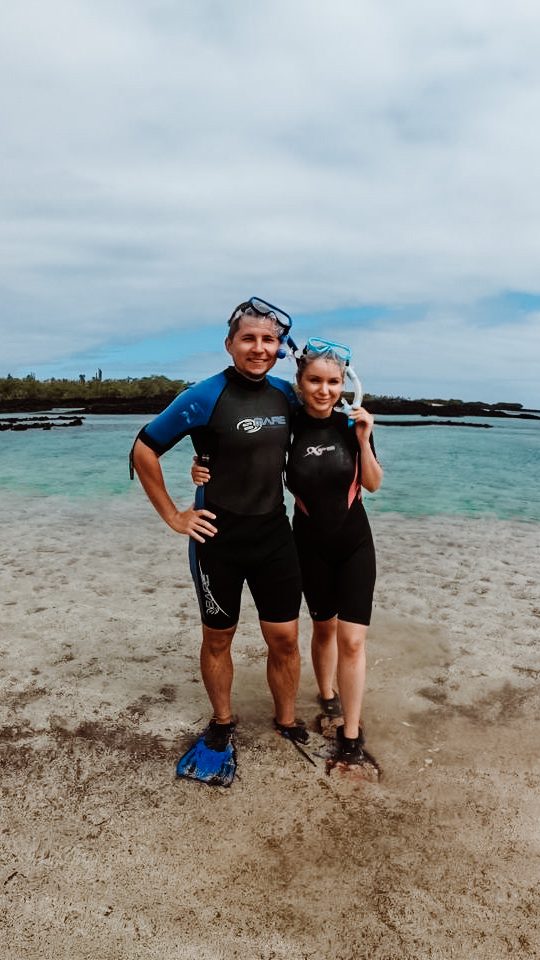
Planning trip to Galapagos Islands?
My wife and I spent two weeks on these magnificent islands, visited nearly every possible tour, and explored as much as we could. I shared all the important details in my comprehensive Galapagos Islands Travel Guide, where I cover everything you need to know about planning a trip to the Galapagos.
Galapagos Islands travel might surprise you with extra fees to enter the islands, the complicated logistics between islands, booking tours, and knowing which spots are free to explore and which ones are not. I’ve covered it all in this Galapagos Travel Guide.
Also, if you’re planning a trip to the Galapagos, make sure to use my link for discounted hotel prices via Booking.com. It really helps support my blog!
Bottom Line
Tortuga Bay is absolutely a must-see when visiting the Galapagos. We found it so refreshing that you don’t need reservations or guides—just some spare time and a bit of curiosity. It’s easy to fit into your itinerary, even if you’re exploring other islands.
What we loved most is that it’s not just about lounging on a beautiful beach. Here, you get to experience Galapagos wildlife up close while enjoying activities like kayaking and snorkeling. So, if you’re planning your trip, definitely carve out some time for Tortuga Bay. You won’t regret it!

